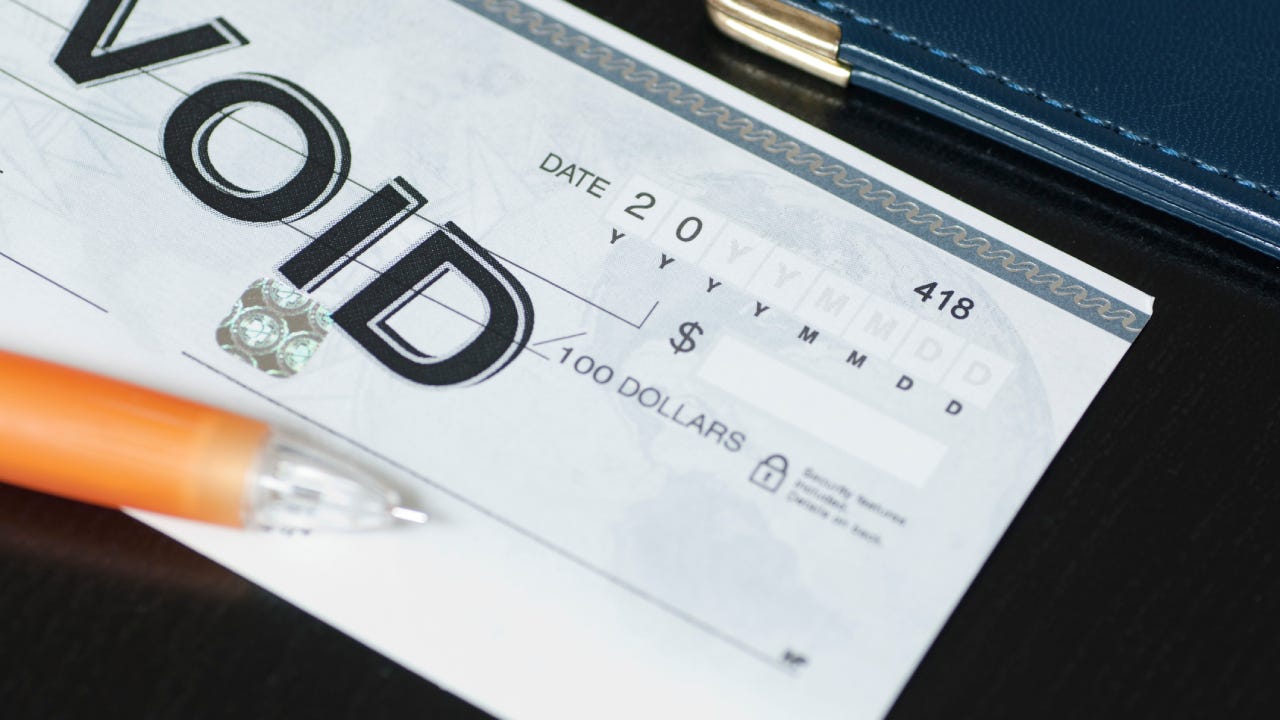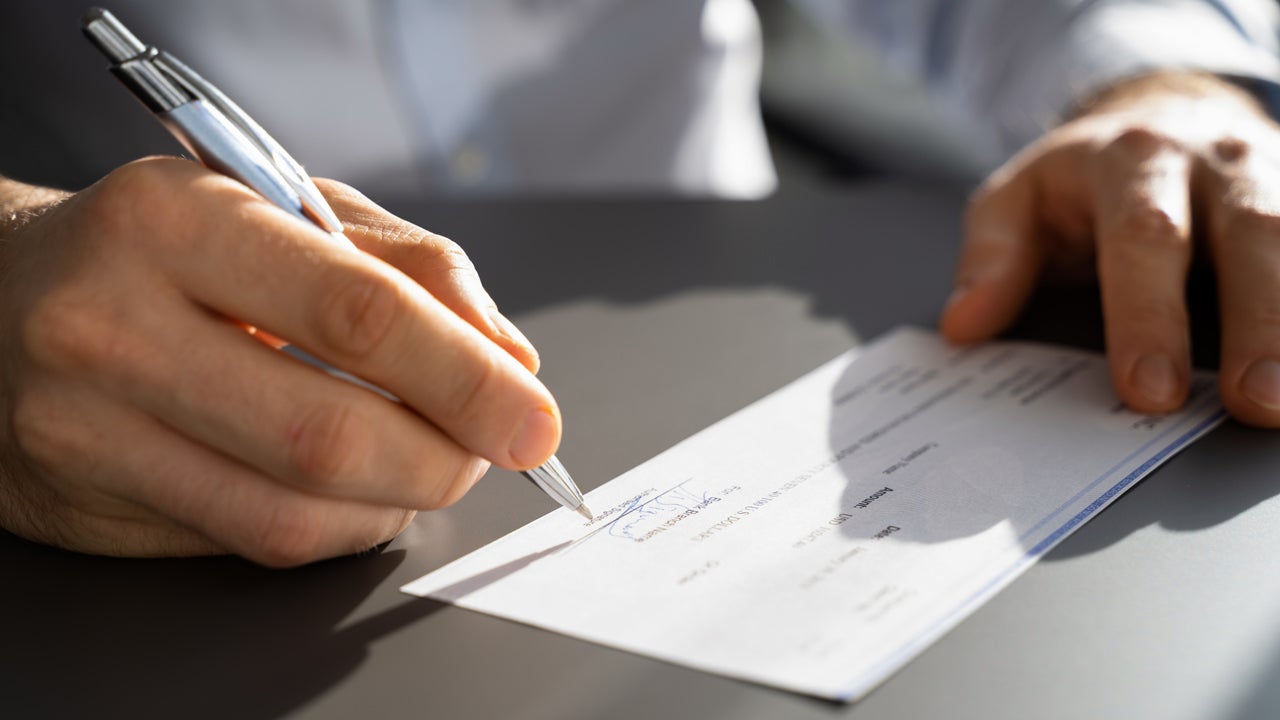How to void a check

Our writers and editors used an in-house natural language generation platform to assist with portions of this article, allowing them to focus on adding information that is uniquely helpful. The article was reviewed, fact-checked and edited by our editorial staff prior to publication.
Whether you’re setting up a direct deposit, an Automated Clearing House (ACH) transfer or an electronic bill payment, a voided check is often required to provide bank account information that’s necessary to direct those payments to your account. Voiding a check is a straightforward process that involves writing the word “VOID” on the check.
Let’s take a closer look at how to void a check and the various uses for voided checks.
Key takeaways
- A voided check is simply a paper check with the word 'VOID' written on it, indicating that it shouldn't be used as a form of payment.
- A voided check can play an important role in setting up various types of financial transactions, such as direct deposits, ACH transfers or electronic bill payments.
- Alternatives to using a voided check to set up direct deposit include a direct deposit form or a bank letter.
What is a voided check?
A voided check is simply a paper check with the word “VOID” written across it, often in big letters, indicating without a doubt that it shouldn’t be used for making a payment. This precautionary measure prevents the check from being misused, whether you used it previously for an electronic payment or by thieves who might attempt to write a large sum of money out to themselves.
Despite being an invalid form of payment, a voided check, which shows your bank’s routing, account and check numbers, can play an important role in setting up various financial transactions. It can serve as a conduit for establishing direct deposits, ACH transfers or to schedule electronic payments from a checking account, whether for personal or business use.
How to void a check
Voiding a check is a straightforward process:
- Use either a blue or black permanent pen.
- Write the word “VOID” prominently on the front of the check. You can write it in larger letters across the entire check or, in smaller letters, on the date, payee, amount and signature lines. Either way, be sure not to write over the routing or bank account numbers at the bottom as those numbers are necessary to identify your account.
- After voiding the check, record it in your check register (check book) with a brief explanation for voiding it for your personal records, noting the check number.
- If you’re using duplicate checks, make sure “VOID” is clearly visible on the duplicate check.
When to use a voided check
There are three main reasons to void a check:
- Setting up direct deposits: A voided check is often required to establish this type of automated payment.
- Facilitating ACH transfers: If you’re making an ACH transfer, a voided check can be used to provide the necessary information about your account.
- Scheduling electronic bill payments: You may need a voided check to provide your account details in order to set up automated bill payments.
Alternatives to set up direct deposit
If you’re unable to provide a voided check, or if your bank doesn’t offer paper checks, there are alternative methods to set up a direct deposit or an electronic payment.
- Direct deposit form: Many banks offer direct deposit forms. These pre-filled forms should suffice as proof of your checking account.
- Bank letter: A bank representative can provide an official document that includes the same information as a voided check. An official bank letter should contain the business name, full routing and account numbers and signed by a bank representative.
- Submitting your banking information online: In the event of making online bill payments, consider using your online bank access. Doing so eliminates the need to use a voided check or paper forms and documents.
Why we ask for feedback Your feedback helps us improve our content and services. It takes less than a minute to complete.
Your responses are anonymous and will only be used for improving our website.
You may also like






